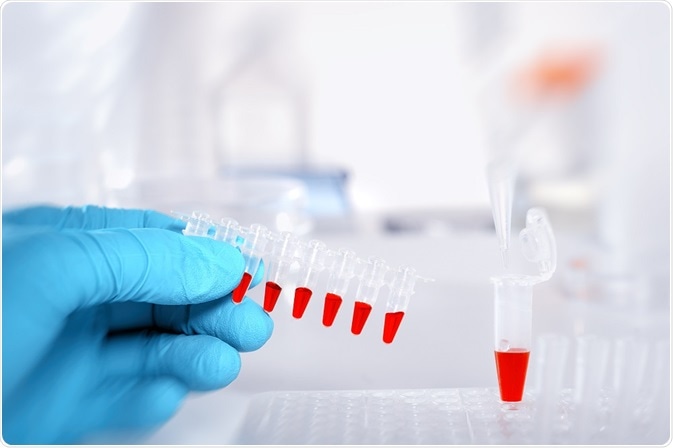To date, there have been more than 80,000 cases of bladder cancer in the US. The best way of boosting the prognosis of patients is through early intervention, which can be achieved through the identification of bladder cancer biomarkers.
 Image Credit: anyaivanova / Shutterstock
Image Credit: anyaivanova / Shutterstock
Early intervention requires early tumour detection, the time-frame of which is often missed by the attending physician. Therefore, research is currently focused upon the identification of possible future biomarkers which could aid both the detection and monitoring of cancerous tumours.
What is a biomarker?
Biomarkers are non-subjective and quantifiable molecules that can indicate changes within normal biological processes. The production of these markers enables cancers, and many other conditions, to be detected and monitored.
There are many different types of biomarkers, including DNA, proteins, cells components and hormones, found in many types of sample including bodily fluid and tissue samples.
For cancer, the most common biomarkers are genetic mutations and increased protein production. The presence of these molecules can indicate many different things, such as the presence of a tumour, the aggressiveness of the tumour and the likely prognosis of the patient. Thus, detection of these biomarkers is a significant tool in the cancer treatment process.
In relation to bladder carcinomas, over 20 different biomarkers have so far been identified. The ideal biomarker for this application would be urine based and enable high accuracy through the method of urine cytology.
Urinary cytology
Urinary cytology is the primary method used for monitoring bladder cancers for numerous reasons. Firstly, it is both non-invasive and highly specific. This makes it preferable over other methods of detection such as cystoscopy, which is quite sensitive, but also very costly, highly invasive and cannot detect the presence of in situ carcinomas.
This invasive procedure also causes lots of psychological stress, making the non-invasive urinary cytology method far superior. However, one issue of the urinary cytology method is poor sensitivity.
Biomarkers used to detect and monitor bladder cancer
One of the main biomarkers used in bladder cancer detection is a type of nuclear matric protein (NMP) called nuclear apparatus proteins (NMP22). This protein is typically involved in the structural formation of the nucleus. However, upon increased cellular apoptosis throughout cancerous cell growth and tumour formation, it is released into the urine at very high quantities.
Studies have found NMP22 at levels of up to 25 times more than normal urinary levels, making it an ideal biomarker for urinary cytology. Additionally, detection through this process also has a very high sensitivity of 61% and a very high specificity of 71%.
Another biomarker is the bladder tumour antigen, which indicates the presence of human complement factor H related protein. This protein is produced in excess by cancerous bladder cells, working to inhibit the innate immune system.
Fibroblast growth factor receptor 3 (FGDFR3) is another biomarker which is typically used to detect bladder carcinomas. 50% of bladder patients have a point mutation within this gene.
Biomarkers of the future
Additional biomarkers which have been investigated include bladder cancer-specific nuclear matrix proteins BCLA-1 and BCLA-4, Lewis X antigen Aurora kinase A, carcinoembryonic antigen-related cell adhesion molecule, DD23, survivin and many others.
However, these markers have not been studied extensively yet, meaning that much more research will need to be carried out before they can be actively used to monitor patients.
Further Reading
Last Updated: Feb 26, 2019